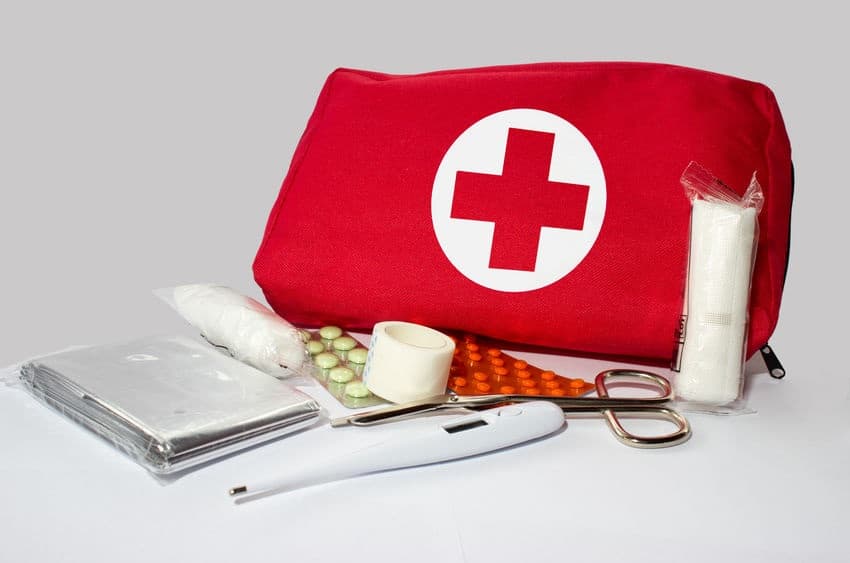Chronic non-healing wounds affect more than 6.5 million people in the United States and 1% to 2% of people will experience a non-healing wound in their lifetime. Unfortunately, these wounds are difficult to treat. They need specialized care.

Without proper investigation, that includes vascular testing, and advanced treatment methods, non-healing wounds can lead to difficult and long-term health problems. These include extreme pain, secondary infections, additional body-wide damage to systems and organs, and loss of limbs.
At Maryland Vascular Specialists, we see many patients with non-healing wounds and recommend best practices for their treatment. Here are some things you should know about non-healing wounds, their causes, and their care.
Defining Non-Healing Wounds
First, let’s look at the definition of a chronic non-healing wound. If a wound doesn’t make any improvement in healing within 4 weeks or persists beyond 8 weeks, it is considered a non-healing wound.
The most common types of non-healing wounds are:
- Venous Ulcers
- Arterial Ulcers
- Diabetic Foot Ulcers
- Pressure ulcers
- Wounds from inflammatory or autoimmune disease
- Surgical wounds
- Wounds from tumors, including cancerous lesions
Beyond the obvious fact that these wounds don’t heal easily, patients will often notice other symptoms early on in their development: increasing or throbbing pain, redness or discoloration beyond the edges of the wound, a feeling of warmth around the wound, oozing, or an odor.
It’s important to discover the causes behind non-healing wounds before treating them. Always consult a wound care specialist or vascular surgeon and never self-diagnose a non-healing wound, because they can be very serious.
Circulation Testing
One of the first lines of intervention against non-healing wounds of the legs is to check the blood flow in your arteries.
There are also times where your doctor may order a study of your leg veins, in such cases where there is a blockage or leaking valves that lead to venous ulcers.
Diabetes and Non-Healing Wounds
There is a strong relationship between diabetes and non-healing wounds. Chronic wounds may happen, particularly in the feet and extremities of people with diabetes, due to damaged nerves in the leg or foot that affects cellular function.
In fact, if you have diabetes, any warmth or tenderness in one of your limbs should be examined by a specialized doctor immediately. When someone with diabetes has a non-healing wound, loss of a limb is much more common.
Hyperbaric Oxygen Therapy (HBOT)
Following examination by a wound care provider, or vascular specialist, hyperbaric oxygen therapy (HBOT) might be recommended.
HBOT involves breathing pure oxygen under pressure as a method to promote healing and restore normal cellular function. In a pressurized room or tube, the patient takes in oxygen while a health care professional monitors the progress over multiple treatments.
Non-healing wounds often benefit significantly from HBOT. Tissue and cellular function improve and, if present, helps fight infection because HBOT is supporting healing and contributing to healthier body functions.
Dressing Non-Healing Wounds
There is no one-size-fits-all approach to dressing, or covering, non-healing wounds. The type of dressing is based on the underlying wound condition and diagnosis. The dressing types include keeping a moist environment (not too dry, not too wet), controlling the bacterial load, promoting healing and, in some case, the need to apply pressure. The type of dressing used and the frequency of application will vary widely depending on the exact diagnosis.
In general, the recommendation for the dressing of a non-healing wound will depend on its underlying cause. Early in the process of treatment, your vascular surgeon may recommend vascular studies. An antimicrobial dressing might be applied to limit infection. Specialized dressings are often recommended to support better healing. There are times when they may also recommend using a gentle pressure dressing to improve wound conditions.
There are also new approaches to dressing non-healing wounds as innovations become available. These include moisture-retentive dressings that protect wounds and promote healing. Progress is also being made with bioengineered skin that can aid in repairing the damage caused by a non-healing wound. Nanotechnology and tiny electronic sensors, which monitor the healing of chronic wounds, are on the horizon.
A Step-by-Step Process to Healing
Healing a chronic wound happens through a closely-monitored process. These are the biggest factors that limit recovery from a non-healing wound:
- Diabetes, which prevents the body from healing appropriately
- Infection, because it causes wounds to get worse instead of better
- Arteriosclerosis, varicose veins, and other conditions related to blood flow
- Age, because older people have more non-healing wounds than younger people
- Obesity, because it puts tension on the body and increases the risk of infection
- Alcohol or tobacco use, which impacts the body and interferes with healing
- Stress, which limits the body’s ability to heal quickly
- Medication that might be necessary for other health issues, but contributes to chronic non-healing wounds too
The most important part of treating a non-healing wound is to get professional help from a wound care specialist. Consider a vascular surgeon and follow their advice precisely. Recovery or improvement is almost always possible when you connect with the experts at Maryland Vascular Specialists.